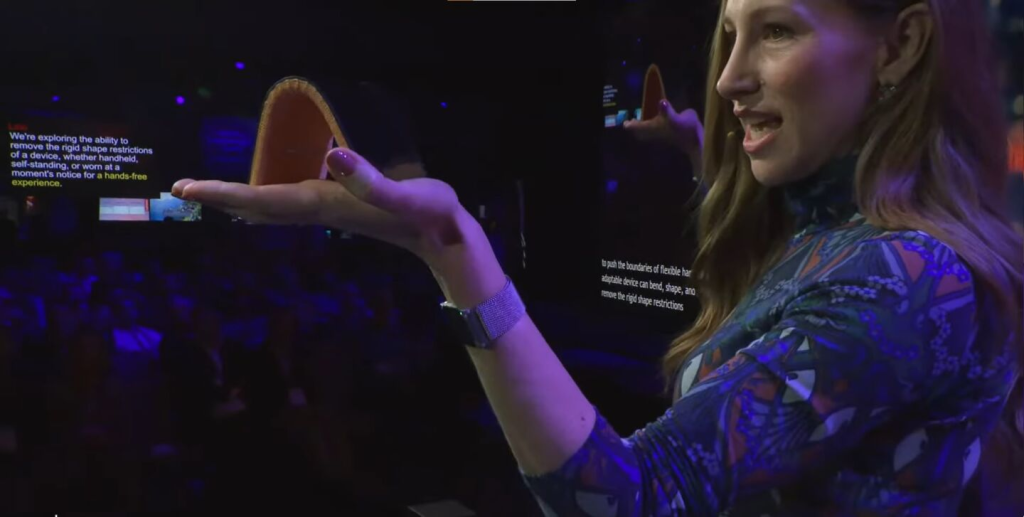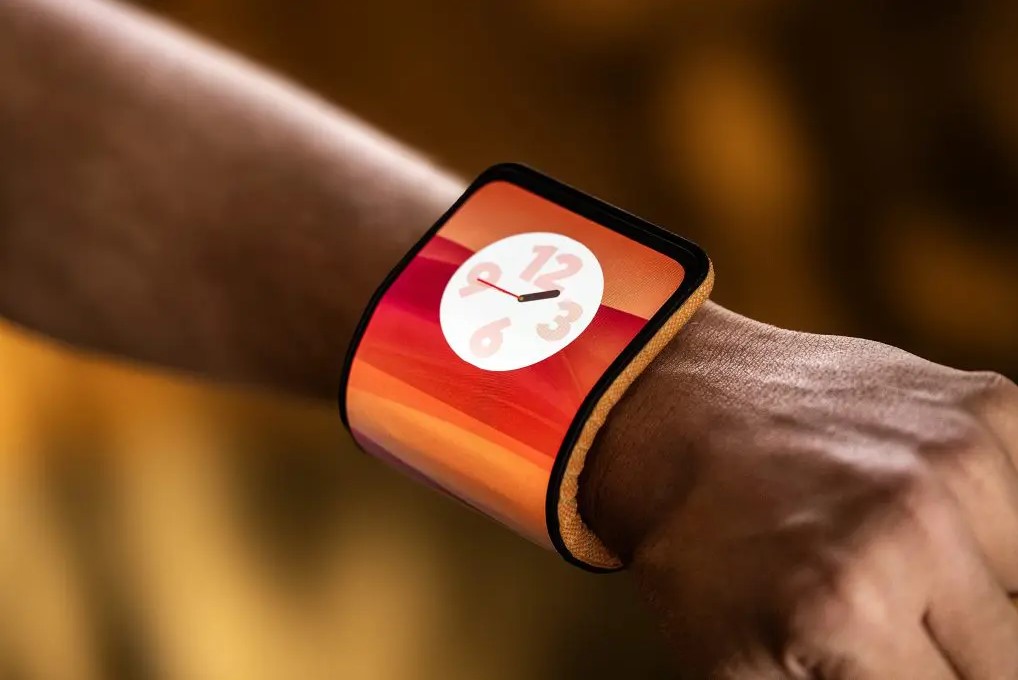Don’t expect this wearable smartphone to be released any time soon, though.

Lenovo’s Motorola mobile brand is resurfacing the idea of the bendable, bracelet-like smartphone. Demoed at Lenovo Tech World ’23 in Austin, Texas, yesterday, Motorola’s “adaptive display” revisits a concept that we’ve seen discussed for years but that doesn’t seem any closer to actually being sold.
On stage at the event, Lexi Valasek, 312 Labs innovation strategy and product research Lead for Motorola Mobility, proudly held a prototype. The smartphone looked ordinary to start: a slab of OLED with a chassis that’s a bold orange on the backside. But Valasek quickly bent the phone into an arch shape, where it stood on her hand before she wrapped it around her wrist like a cuff.
The phone seemed to adapt to its new positioning rapidly, quickly showing a large clock, making the device feel like a smartwatch.
Interestingly, Valasek placed the phone around a silver band already wrapped around her wrist. Lenovo hasn’t confirmed why, but The Verge suspects this could be critical to the phone being wearable by featuring a magnet for a secure hold. Videos Motorola shared with its press release today also show the user wearing some sort of metal-looking band on their wrist that the smartphone wraps around. And images of the device show a metal-looking strip that might be for connecting to the additional band in question.Advertisement
According to Motorola’s press release, the concept device has “FHD+” resolution across the display, which has a 6.9-inch diagonal size when flat. Also when flat, the device runs the “full Android experience, just like any smartphone,” according to Motorola.
The concept shown this week differs slightly from the concept demoed at Lenovo Tech World ’16 in that it can be arched or bent into an upright position.
According to Motorola:

Further, as The Verge pointed out, the foldable phone no longer seems to make a “crunching noise” when wrapping around a user’s wrist.
But beyond that, Motorola doesn’t seem any closer to releasing the design.
“We’re exploring the ability to remove the rigid shape restrictions of a device whether handheld, self-standing … or worn at a moment’s notice for a hands-free experience,” Valasek said on stage.
TCL has also played around with a wraparound smartphone, teasing a similar concept in 2019, as reported by CNET.
But even if this form factor has been explored for years, there still seem to be some limitations regarding practical use. For one, it’s unclear how heavy the smartphone would be or how warm it might get on your wrist. Plus, having to wear a second product to get the full functionality of the smartphone seems burdensome. Price and durability are also concerns.
Demand may still not be high enough, either. Foldable phones represented “only about 1 to 2 percent” of the market worldwide in 2022, the IDC reported in December. However, the IDC analyst also expects the foldable market to grow rapidly (a compound annual growth rate of 27.6 percent from 2022 to 2027), especially as prices decline.
“Does it commercially make sense, now, to push [a foldable]? Probably not yet for us,” Stefan Streit, general manager of global marketing at TCL, which has yet to release a foldable smartphone, told CNET in January.
As Lenovo continues exploring different OLED form factors in consumer devices, like with the rollable laptop concept announced in February and the Lenovo 16-inch ThinkPad X1 Fold (a foldable PC that’s supposed to come out this year), we’ll probably see more experimental concepts played with on stage long before they’re offered in stores.





